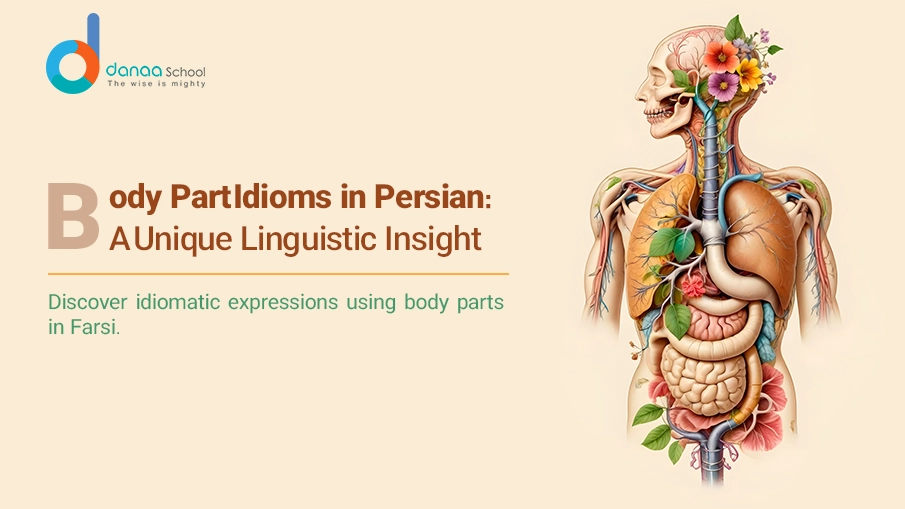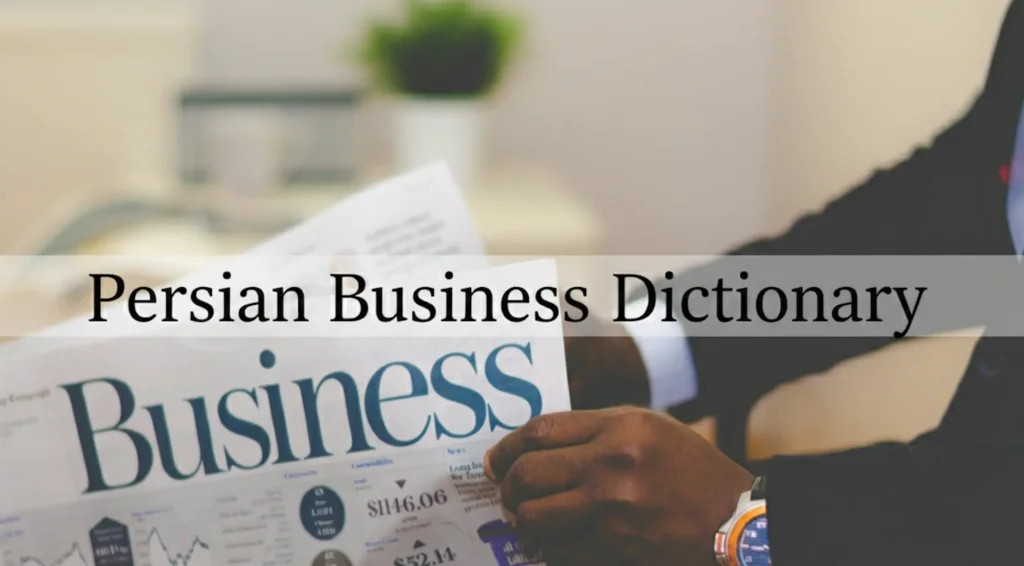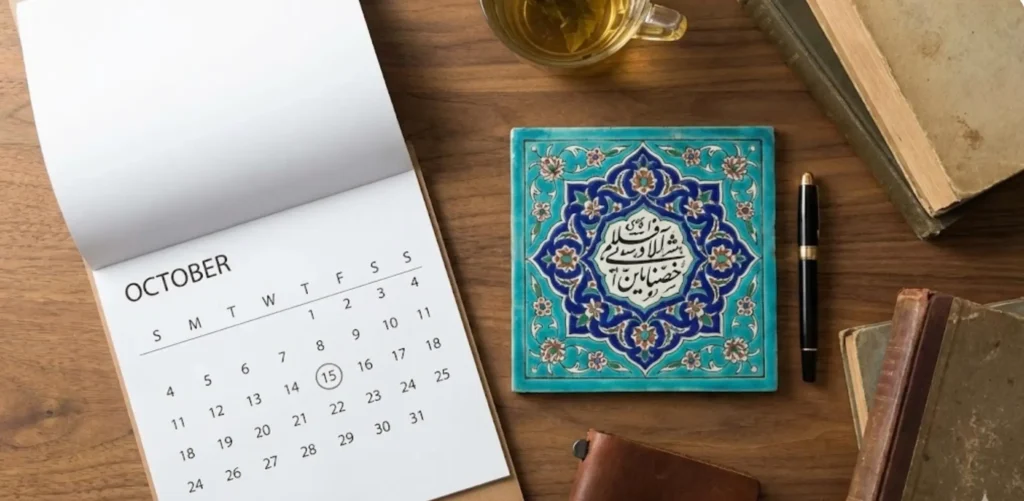Learning a new language isn’t just about grammar and vocabulary; it’s about understanding culture through idiomatic expressions. Persian (Farsi) is rich in proverbs and idioms, often inspired by body parts.
These phrases reflect wisdom, humor, and cultural nuances. Below, we’ll explore some fascinating Persian expressions with parts of the body like سر (sar, ‘head’), چشم (cheshm, ‘eye’), پشت (posht, ‘back’), دست (dast, ‘hand’), and پا (pā, ‘foot’).
Ready to dive into the poetic and humorous world of Persian idioms? Let’s get started!
Persian Expressions with Body Parts: سر (Sar) ‘Head’
The word سر (sar, ‘head’) features in many Persian idioms, often symbolizing leadership, responsibility, or priority. Here are some common examples:
-
- سر کسی شلوغ است (Sar kasi sholough ast)
Translation: Someone’s head is busy.
Meaning: This expression is used to describe someone who is extremely busy or overwhelmed.
- سر کسی شلوغ است (Sar kasi sholough ast)
-
- سر زبان بودن (Sar-e zaban boudan)
Translation: To be on the tip of someone’s tongue.
Meaning: This phrase refers to something or someone that is being talked about frequently or is well-known.
- سر زبان بودن (Sar-e zaban boudan)
-
- سر به هوا (Sar be hava)
Translation: Head in the air.
Meaning: It describes someone who is absent-minded or careless.
- سر به هوا (Sar be hava)
-
- سر از پا نشناختن (Sar az pā nashnākhtan)
Translation: Not knowing head from foot.
Meaning: This idiom reflects extreme excitement or joy, where someone is too elated to think straight.
- سر از پا نشناختن (Sar az pā nashnākhtan)
These expressions with سر reveal how this body part symbolizes intellect, emotion, and social dynamics.
Persian Expressions with Body Parts: چشم (Cheshm) ‘Eye’
In Persian, چشم (cheshm, ‘eye’) often conveys emotions, attentiveness, or respect. The eyes are also a window to affection and politeness in Persian culture.
-
- چشم شما روشن (Cheshm-e shomā roshan)
Translation: May your eye be bright.
Meaning: This is a congratulatory phrase, often used to celebrate good news or the arrival of a loved one.
- چشم شما روشن (Cheshm-e shomā roshan)
-
- چشم در چشم شدن (Cheshm dar cheshm shodan)
Translation: Eye to eye.
Meaning: It refers to direct confrontation or meeting someone face-to-face.
- چشم در چشم شدن (Cheshm dar cheshm shodan)
-
- چشمپوشی کردن (Cheshm-poshi kardan)
Translation: To close one’s eyes.
Meaning: This idiom means to ignore or overlook something, often out of kindness or understanding.
- چشمپوشی کردن (Cheshm-poshi kardan)
-
- چشم خوردن (Cheshm khordan)
Translation: To be eaten by the eye.
Meaning: This phrase reflects the concept of the “evil eye,” where someone’s success or beauty might attract envy or harm.
- چشم خوردن (Cheshm khordan)
Expressions with چشم highlight the cultural emphasis on politeness, affection, and even superstition in Persian traditions.
Persian Expressions with Body Parts: پشت (Posht) ‘Back’
The back, پشت (posht), is often a metaphor for support, betrayal, or resilience. Here are some idioms to know:
-
- پشت کسی خالی کردن (Posht-e kasi khāli kardan)
Translation: To empty someone’s back.
Meaning: This phrase means to betray or abandon someone in their time of need.
- پشت کسی خالی کردن (Posht-e kasi khāli kardan)
-
- پشتگرمی داشتن (Posht-garmi dāshtan)
Translation: To have a warm back.
Meaning: This refers to having strong support, whether from family, friends, or resources.
- پشتگرمی داشتن (Posht-garmi dāshtan)
-
- پشت سر کسی حرف زدن (Posht-e sar-e kasi harf zadan)
Translation: To talk behind someone’s back.
Meaning: It refers to gossiping or speaking ill of someone when they are not present.
- پشت سر کسی حرف زدن (Posht-e sar-e kasi harf zadan)
-
- پشت کسی ایستادن (Posht-e kasi istādan)
Translation: To stand behind someone.
Meaning: This idiom is used for offering moral or physical support to someone.
- پشت کسی ایستادن (Posht-e kasi istādan)
With these expressions, پشت becomes a vivid symbol of loyalty, strength, or deceit in Persian culture.
Persian Expressions with Body Parts: دست (Dast) ‘Hand’ and پا (Pā) ‘Foot’
Hand and foot are versatile body parts in Persian idioms, symbolizing action, effort, or status. Let’s explore their meanings:
Expressions with دست (Dast) ‘Hand’
-
- دست کسی را گرفتن (Dast-e kasi rā gereftan)
Translation: To take someone’s hand.
Meaning: This idiom reflects helping or supporting someone in need.
- دست کسی را گرفتن (Dast-e kasi rā gereftan)
-
- دست خالی (Dast khāli)
Translation: Empty-handed.
Meaning: It describes someone who has failed to achieve something or has nothing to offer.
- دست خالی (Dast khāli)
-
- دست به دست کردن (Dast be dast kardan)
Translation: To pass hand to hand.
Meaning: This means passing something from one person to another, often used metaphorically for cooperation.
- دست به دست کردن (Dast be dast kardan)
-
- دستودلباز بودن (Dast-o-del-bāz boudan)
Translation: To have an open hand and heart.
Meaning: This phrase describes someone who is generous or kind-hearted.
- دستودلباز بودن (Dast-o-del-bāz boudan)
Expressions with پا (Pā) ‘Foot’
-
- پا پیش گذاشتن (Pā pish gozāshtan)
Translation: To step forward.
Meaning: This idiom refers to taking initiative or being proactive in a situation.
- پا پیش گذاشتن (Pā pish gozāshtan)
-
- پا به پا کردن (Pā be pā kardan)
Translation: To walk foot by foot.
Meaning: This is used to describe moving slowly or hesitating.
- پا به پا کردن (Pā be pā kardan)
-
- پا خورده شدن (Pā khorde shodan)
Translation: To be stepped on.
Meaning: This phrase can mean being taken advantage of or facing humiliation.
- پا خورده شدن (Pā khorde shodan)
-
- پا گذاشتن روی چیزی (Pā gozāshtan ru-ye chizi)
Translation: To step on something.
Meaning: It symbolizes ignoring or rejecting something, often values or feelings.
- پا گذاشتن روی چیزی (Pā gozāshtan ru-ye chizi)
By combining دست and پا in idiomatic language, Persian culture offers profound insights into human interactions, values, and emotions.
Why Learn Persian Expressions with Body Parts?
Idioms are more than just words; they are windows into a culture’s worldview. Persian expressions with body parts provide a blend of humor, wisdom, and social norms that enrich your understanding of the language.
Danaa School, a platform for learning Persian, emphasizes cultural immersion alongside grammar and vocabulary. Mastering these idioms will not only enhance your fluency but also help you connect with native speakers on a deeper level.
By using idioms like these, you’ll sound more natural and relatable in your Persian conversations. Plus, understanding these phrases can help you appreciate the poetic and metaphorical nature of Persian communication.
Find Your Ideal Teacher
At Danaa School, you can choose your Farsi tutor from a selection of qualified and experienced teachers. Begin an exceptional journey into the world of Persian language!
Book Your Trial Lesson
FAQs
How can I use Persian idioms in everyday conversations?
Start by memorizing simple idioms and their meanings. Practice using them in appropriate contexts, like showing support or describing emotions.
Are Persian idioms common in formal settings?
Yes, idioms are versatile and can be used in both formal and informal conversations. However, the tone and context matter.
What is the significance of body parts in Persian culture?
Body parts are often used metaphorically to express emotions, actions, and relationships, reflecting the culture’s deep-rooted appreciation for poetic expression.
How can I avoid confusing idioms in Persian?
Pay attention to context and ask native speakers for clarification when unsure. Regular practice will help you internalise their meanings.
Where can I learn more Persian idioms?
Enroll in courses at Dana School or use Persian literature and media to discover idioms in their natural context.
Are idioms important for language fluency?
Absolutely. Idioms bridge the gap between textbook language and real-world communication, adding depth and authenticity to your speech.
Conclusion
Learning Persian expressions with body parts is a rewarding journey into the heart of the language. By understanding idioms featuring سر (head), چشم (eye), پشت (back), دست (hand), and پا (foot), you’ll gain a richer understanding of Persian culture and communication.
If you’re eager to enhance your Farsi skills further, consider joining Danaa School, where language learning meets cultural exploration. Take your Persian to the next level and impress native speakers with your idiomatic knowledge today! Enroll now.
Want to Learn Farsi at Danaa School?
Here are the best resources for you!







